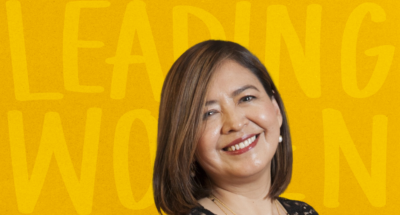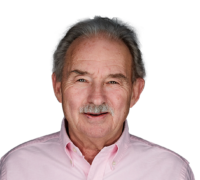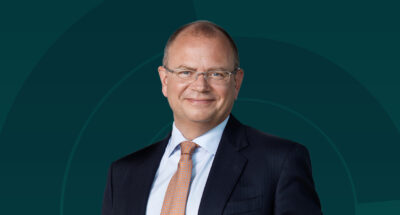
How to teach an entrepreneur to let go
Biotech entrepreneur Juana Lucia Flores-Candia explains that technology has changed the way to mentor chief executives. Here are her three ways to get entrepreneurs to focus....

by William A. Fischer Published 9 February 2022 in Leadership • 8 min read
Look around! New technologies are dramatically changing nearly every facet of the world we live and work in. New business models designed to gain advantages from these technological changes are proliferating. And occasionally we see organizations changing their structure and practices to support these new business models. However, we hear very little about the ways in which the leaders of those organizations are changing themselves. It is presumptuous to believe that, in the midst of all of these changes, those executives aren’t reconsidering who they are and how they work.
Zhang Ruimin is one of the world’s most interesting business leaders. Becoming managing director of the near-bankrupt Qingdao Refrigerator Co in 1984, his ideas turned around the company’s fortunes and led to its successful rebranding as Haier. He now heads the world’s leading home appliance company, which has earned him the respect of many observers of complex organizations. What Zhang thinks about leadership for the future should be of interest to anyone struggling to move their organization forward into the unknown.
Recently, the company renovated its Haier Enterprise Culture Center. At an event to mark the center’s reopening, Zhang shared various thoughts, offering a fascinating insight into how he sees the leadership role of the future. I believe that the essence of his remarks can be useful to most managers, no matter where they are from, or the industry they work in.
After completing a tour of the center’s new exhibition, Zhang commented that he looked at the desired customer experience its designers had striven for in the same way that he would look at any customer experience. He was no longer a tourist, but a fully engaged co-creator who viewed everything around him as a source of learning and of new ideas. Many leaders would have viewed the exhibition as just another obligatory part of their job, and then moved on to “more important things”.

“The unchanging purpose of maximizing human value is what keeps us in the lead. If we change this purpose, we will cease to lead; it supports all external manifestations of leadership”Zhang Ruimin
What Zhang saw was that the exhibition was the important thing. If the exhibition was not faithful to Haier’s “Rendanheyi philosophy” – a core idea of Zhang’s that all employees are best able to create value for themselves, the company, and its customers by having to face users directly and be entrepreneurs – then it would be a source of profound contradictions for anyone visiting it. One of the secrets of Rendanheyi is that its core beliefs are visible and coherent from any and every vantage point. This fractal character is essential in holding together the many different business models and entrepreneurs found within Haier as a single community.
At Haier, the guiding principles of Rendanheyi are the central motivating force around which the culture resonates. These apply as much to an exhibition in its Enterprise Cultural Center as to any of the micro-enterprises, platforms, and ecosystems that characterize Haier’s daring efforts to rethink how human talent contributions can be maximized.
The first lesson is that a leader must live the philosophy they follow in order to engage their colleagues at work. To be fully effective, they must believe that the principles that guide them at work are equally effective in other parts of life, otherwise that philosophy lacks credibility. A leader must be consistent as a practitioner in everything they do. Thus, if you visit an exhibition about your company’s culture, you must look at it in the same way as you would observe any work setting, and always with an interest in what you can learn, and how you can contribute to those you observe.
“Maximizing human value is the common thread running throughout this exhibition,” Zhang commented at the end of his visit. I understood this to mean: maximizing human value is at the core of all we do at Haier, and so naturally I am always interested in how I see this value being expressed anywhere I go.
Examining organizations that are thriving as a result of giving workers sufficient autonomy to make a difference and treating them as entrepreneurs rather than cogs in a machine reveals that a system of shared beliefs (and guiding principles to articulate them) is essential to providing reassurance that everyone can be trusted to do the right thing. Guiding principles thus become reliable instructors of what the right thing is.
At Haier, Zhang has established that: “The unchanging purpose of maximizing human value is what keeps us in the lead. If we change this purpose, we will cease to lead; it supports all external manifestations of leadership.” Having such an unchanging expression of what the organization believes has served Haier well for nearly four decades.
Everything should be dynamic. Zhang has consistently emphasized that change is the new compelling dynamic in the outside world. At the center’s reopening he noted: “What I like about the new cultural exhibition is its dynamism. A clock is placed at the start of each strategy stage to suggest that Haier’s spirit is dynamic yet consistent.”
Seeking is the leader’s primary job. “It is about seeking. Always seeking. The way ahead is long, and I shall go up and down to seek my truth. We were seeking in the past, we are seeking today, and we will continue to seek in the future.” What Zhang recognizes is that in a world of continuous change, it’s not what you already know that will help you, but how you can learn; what you already know is highly perishable, but how you learn becomes a durable key to the future. As a result, the leader must become a seeker in everything that they do. This leads to experimentation as the preferred style of working.
Self-questioning is the source of inexhaustible energy. “The inexhaustible source of energy for the spirit of seeking is accepting no complacency,” is another of Zhang’s maxims. Since the outset of Haier’s entrepreneurial journey, all company employees have accepted the idea that “the only constant is change”. But constant change can be exhausting, and it is easy to fall into a habit of accepting occasional transgressions where you sit back and allow satisfaction with the present.
For Zhang, this is unacceptable. Haier embraces self-questioning as a value: nothing is accepted as good enough. Self-questioning can take many forms, from bidding for opportunities to challenging for 1% improvement every day, but in the end it goes back to seeking: how can we do this better, faster, more interestingly, all in the pursuit of maximizing human value?

Zhang explained that self-questioning lay at the heart of one of Haier’s most famous moments – the legendary public destruction of the company’s faulty refrigerators in 1985, shortly after his appointment. Did the company believe that the domestic Chinese market of the future would be as tolerant of poor product quality? Was it satisfied with the products it was producing? Did it have the right employees? What was it doing to maximize human value? After all, if the company believed that “high-quality people were needed to produce high-quality products,” what were the implications of the poor level of the products it was producing at the time?
Iteration as the means of moving forward. Zhang observed that, “few companies will openly claim to be ‘self-questioning’, but no matter what one claims, results show that most companies are still ‘self-affirming’.” How can a leader break out of such tendencies that encourage complacency? Self-questioning is part of the answer, because the belief that things can be done better fuels the desire to change; iteration supports taking the proposals that arise from self-questioning and then testing them in practice, and becomes the main means to move forward.
At Haier, the vehicle for this process is its “Ecosystem Micro-Community” (EMC), a structure that can create “contracts” between microenterprises within the company. Every EMC contract is a new beginning, informed by the result of prior EMC efforts and always aimed at the pursuit of maximizing human value. Each contract contains precise objectives, agreed roles of participation, and shared expectations of value creation, always negotiated with the experiences of the past in mind. Hence, there is no straight path to the future, only a path constructed by continuously iterating, and thus filled with twists and turns arising from learning that were unavailable when earlier EMCs were formed.
It’s a process well captured by the 20th-century Spanish poet, Antonio Machado:
Traveler, there is no road;
you make your own path as you walk.
As you walk, you make your own road,
and when you look back
you see the path
you will never travel again.
Pulling together the insights gained from Zhang’s comments, I suggest thinking further about the following:

Emeritus Professor of Innovation Management
William A Fischer is Emeritus Professor of Innovation Management. He co-founded and co-directs the IMD program on Driving Strategic Innovation, in cooperation with the Sloan School of Management at MIT and authors a regular column for Forbes.com entitled The Ideas Business.

20 November 2023 • by Juana Lucia Flores-Candia in Leadership
Biotech entrepreneur Juana Lucia Flores-Candia explains that technology has changed the way to mentor chief executives. Here are her three ways to get entrepreneurs to focus....

17 November 2023 • by Michael D. Watkins in Leadership
Executives winning promotion must navigate their transition with a balance of humility, respect for legacy, and a vision for the future....

14 November 2023 in Leadership
Henrik Andersen discusses with IMD President Jean-François Manzoni the challenges of navigating supply chain disruptions and soaring raw material costs over the past three years, and why he changed the wind farm...

6 November 2023 • by Brenda Steinberg, Michael D. Watkins in Leadership
Strategic thinking is key to career advancement – but communicating it to others is just as important. Ask yourself these 10 questions to find more ways to demonstrate your strategic abilities to...
Explore first person business intelligence from top minds curated for a global executive audience